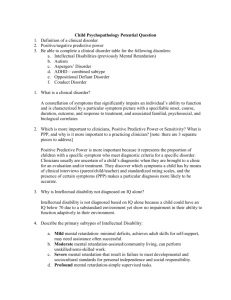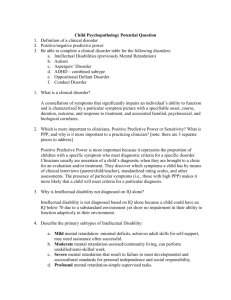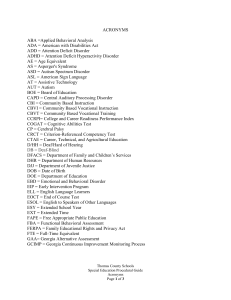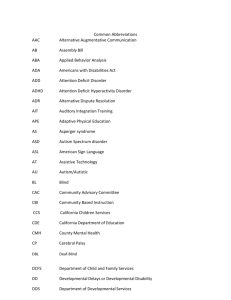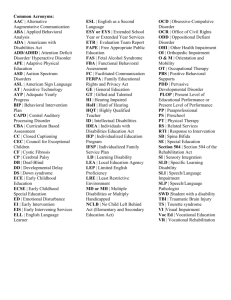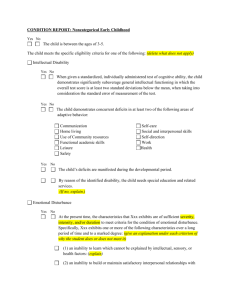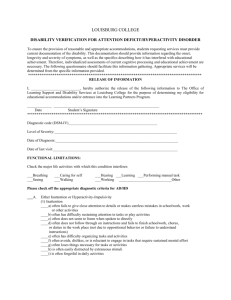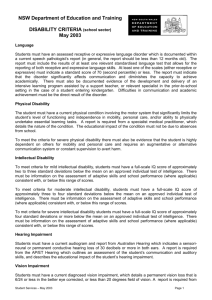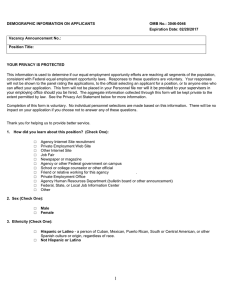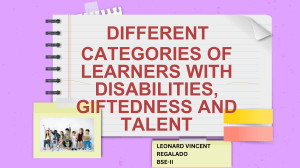Exam-1-Possible-Exam-Questions-ONLY
advertisement
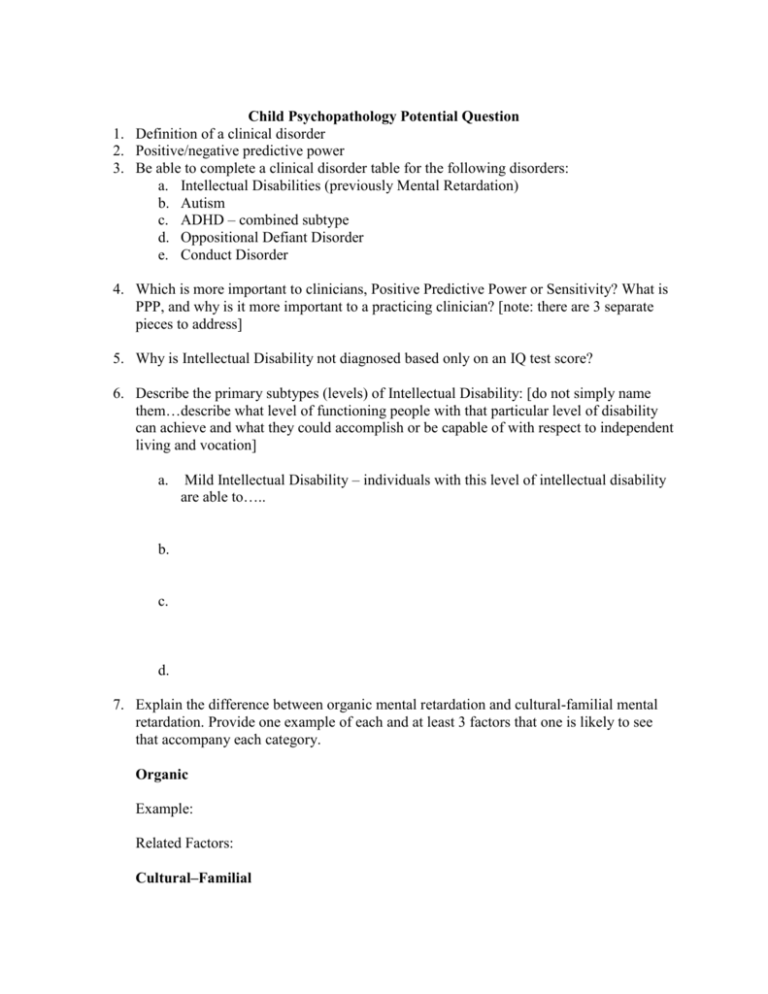
Child Psychopathology Potential Question 1. Definition of a clinical disorder 2. Positive/negative predictive power 3. Be able to complete a clinical disorder table for the following disorders: a. Intellectual Disabilities (previously Mental Retardation) b. Autism c. ADHD – combined subtype d. Oppositional Defiant Disorder e. Conduct Disorder 4. Which is more important to clinicians, Positive Predictive Power or Sensitivity? What is PPP, and why is it more important to a practicing clinician? [note: there are 3 separate pieces to address] 5. Why is Intellectual Disability not diagnosed based only on an IQ test score? 6. Describe the primary subtypes (levels) of Intellectual Disability: [do not simply name them…describe what level of functioning people with that particular level of disability can achieve and what they could accomplish or be capable of with respect to independent living and vocation] a. Mild Intellectual Disability – individuals with this level of intellectual disability are able to….. b. c. d. 7. Explain the difference between organic mental retardation and cultural-familial mental retardation. Provide one example of each and at least 3 factors that one is likely to see that accompany each category. Organic Example: Related Factors: Cultural–Familial Example: Related Factors: 8. What three areas must a child show severe and pervasive impairment in to be diagnosed with Autism? Describe the impairment that children with Autism typically show in each area. a. Impairment in social functioning- [provide a minimum of 3 types of behavior that are characteristic of social impairment in individual with autism] b. Impairment in communication- [provide multiple descriptions—same as above] c. Stereotyped patterns of behavior- [provide multiple descriptions—same as above] 9. Explain how the IQ-Achievement discrepancy is used to diagnose learning disorders and why it may not be the best way to diagnose children with learning disorders. 10. Provide three possible explanations for self-injurious behaviors in children with Intellectual Disability. a. They serve… b. SIB may reflect… c. Children who exhibit SIBs may have… 11. Describe the two primary subtypes of ADHD. Combined type – [include additional information about this subtype, not just the symptoms…include several characteristics of this subtype] Predominantly inattentive type – [include additional information about this subtype, not just the symptoms—same as above] 12. How does incidence rate differ from prevalence rate? Incidence rate refers to…. Prevalence rate refers to… 13. What are callous unemotional traits and what role do they play in children diagnosed with conduct disorder (i.e., is the behavior and/or outcomes different for children with conduct disorder with and without CU traits?). Callous unemotional traits: a. b. c. They predict the following: a. b. c. d. e.
